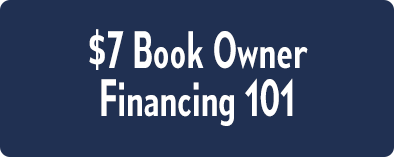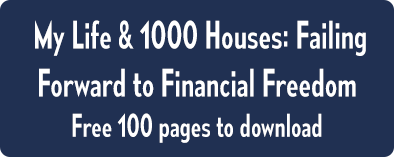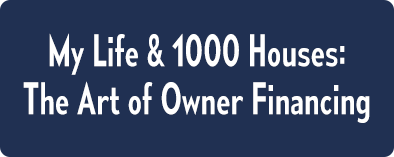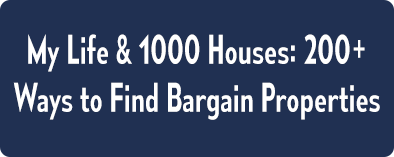PODCAST
LinkedIn Lead Generation Strategy With Yakov Smart
Episode 457: LinkedIn Lead Generation Strategy With Yakov Smart
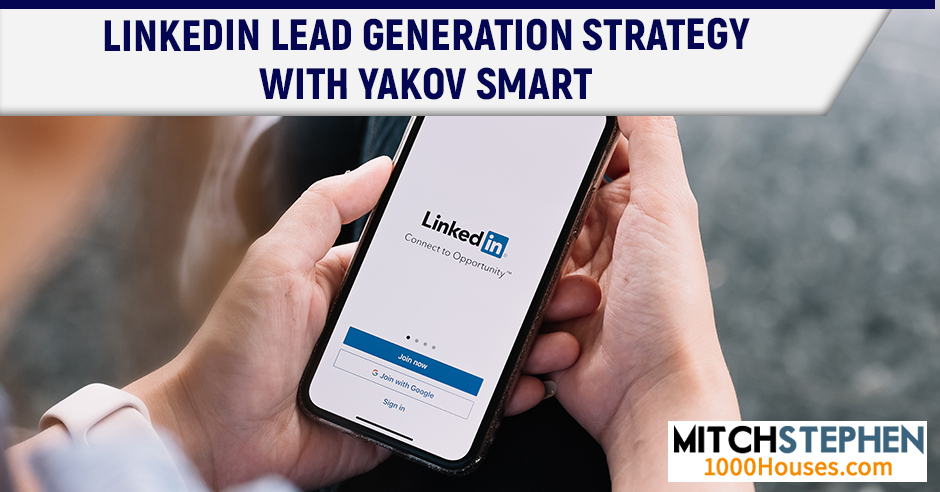
Do you know that you can use LinkedIn to generate leads and build relationships with high-net-worth investors? Mitch Stephen’s guest today is Yakov Smart, the President of Linked Lead Enterprises. Yakov explains that the first thing you need to do is to build a targeted list. He explains why you should remember to target locally and find those who have common traits with you. He also highlights the importance of sending messages, giving value, and building trust. What type of messages are you sending? Tune in to today’s episode to find out Yakov’s messaging strategy!
—
I’m here with Yakov Smart and he’s coming from Arizona. He’s going to talk to us about how we can use LinkedIn to raise private money and find high-net-worth investors. With no further ado, Yakov, how are you doing?
I’m doing well. It’s awesome to be here, Mitch.
Give us a little bit of your background. I’ve talked with you before, so some people may recognize you and already know your story, but then others may not, so tell us a little bit about your background and we’ll move forward to this topic.
I’ve been marketing and building relationships online for pretty much as long as I can remember. I’m part of the generation that grew up with social media, as crazy as that sounds so I got online. I remember being on Myspace.com, for those of you who remember, in eighth grade. That’s when I got my start using social media and back then I was trying to use it to hit on chicks and not for business purposes. To make a long story short, I got into doing an online business back around 2014 or 2015. My first online business project was an eBook that I wrote for college kids on how to succeed in college and that’s when I got my start in dipping my toes in the water of Internet Marketing and learning the tricks of that trade.
The way I started using LinkedIn more progressively was when I was selling software. It was driving me crazy having to cold call small business owners and bug them, and it was bugging me. I would do that day in and day out and I couldn’t take it anymore, so I turned to LinkedIn and social media as a way of building those relationships. Inadvertently, I discovered a new way of using LinkedIn through that process. That’s when I started meeting small business owners and working with them, showing them how to generate leads, and find potential clients using LinkedIn.
Fast forward a bit, I built a six-figure consulting business doing that, and when COVID hit, which we all remember where we were when that happened. I was doing a lot of live events and a lot of in-person training for a number of business owners. We transitioned to working almost exclusively and primarily with real estate investors and real estate entrepreneurs who wanted to find private lenders who wanted to build those key relationships using LinkedIn.
What happened was, as I’m sure a lot of people reading are aware, in-person networking and conferences went away. It used to be where you’d make those key relationships via handshake and you go to these key conferences every single year. That didn’t exist anymore so people were looking for a way to do that virtually. How do you take that same trust-building process and replicate that online? The methodology that we came up with was a way to do that using LinkedIn and a way to do that systematically for consistent results.
Give us an example. What was one of your first get together on LinkedIn? How do you get people to attend? What’s the first meeting look like? Do you schedule a Zoom call with a private business owner or are you doing it with groups of people?
There are a few different ways to do it. The first thing before that is using LinkedIn to build a targeted list. Someone who is a private lender or someone who is a high net worth individual, which is a lot of the people that work with us. They want high net worth individuals who can be private lenders whether it’s a syndication model, a fund, or whatever the case may be. The first step is to identify those people and build a list of people based on net worth, income and location. There’s a number of different variables someone can use to do that.
Take that first step, and the rest will follow! Share on XWhen reaching out, I’m big like you probably are in educating first. One strategy is you can invite them to a Zoom call or a webinar where you’re sharing what it takes to partner with you. That’s certainly an option. What a lot of our students do too is they share an article, or maybe they were interviewed on a podcast. They share something of value, first and foremost. From that, asking the right questions to gauge that person’s interest level and that person’s level of being educated. From there, most people will want to book a call with that person were to get to know what they’re looking for when lending money, what they’re looking for when getting involved in deals and going from there.
Why is LinkedIn the website of choice?
When you think about other social media and I’m not going to get on the soapbox here, as tempting as it is, because I know Facebook, Twitter, censorship and all that, there are all sorts of rabbit holes that we can get down but we won’t here. As far as I know, a lot of people are fed up with Facebook for a number of reasons. They’re fed up with other social media and now LinkedIn is the social media of choice like it has been for busy professionals for a while, but now more so than ever, because there’s less BS on LinkedIn.
It’s a platform, people go to build relationships, to learn and to grow. The average household income of a LinkedIn user is $115,000. There are people there who are multimillionaires and billionaires, those types of private lenders. There are institutional investors, and you can build relationships there directly. One other thing that was fascinating about 2020 in LinkedIn, the conversation rate went up by 55% on the platform.
Over the course of 2020, 55% more conversations, more engagement, because everyone has a LinkedIn profile. It’s hard to find someone who does it but now especially people are engaging and paying attention. They’re there to build those key relationships and it keeps growing. They’ve made it more user-friendly. They’ve added a ton of new features for building relationships with high-net-worth individuals and building trust that scales and building your authority. There’s no place like it in terms of online.
It seems pretty pure right now, but how long before it gets polluted?
It’s already polluted in some way. There are certainly people out there who spam my messages and pitch all sorts of stuff. There’s always that, but the cool thing about that, and this is part of the mentality here, is you have a chance to zig when others are zagging or maybe it’s the other way around, zag when others are zigging. If everyone is doing this BS on Facebook, they’re trying to post a bunch of content on Twitter, whatever the case may be, or Instagram is the hot thing. LinkedIn is this place where you have this opportunity to get a direct response. You have the opportunity to connect with someone, build that direct relationship and transition offline.
Imagine going to this big conference where you can be intentional with everyone you meet. That’s what the search filters are there for. There are many different angles for using it, many strategy and tactics we can get into. It’s important to understand though that it’s wide open now. It’s a big opportunity. Sure, some people are abusing it, some people are spamming away and doing what they’re doing there, but by and large, when you’re strategic about it, when you come from a place of intention and you know who you’re looking for, the payoff is huge.
Let’s talk about that. How do you keep from being classified as one of those undesirables?
Here’s what you don’t do. This was a few years back too. I connected with a guy, and I kid you not, he sent me a direct message within five minutes and he tried to sell me five different things in that same message. I can’t even make that up. It’s 5 paragraphs, 5 different pitches, 5 different links. I’m like, “Slow down, I don’t even know yet.” I didn’t even read as much. This is bonkers. That’s what you don’t do. You want to give value and there are three ways to give value through a direct message and a lot of people don’t talk about this.
The first way to give value is to specifically pinpoint a challenge that someone’s having. Let’s say maybe someone is a high net worth individual. They’ve got some capital, but they’re on a roller coaster of the stock market and they’re getting fed up with dealing with all that comes with it. If you can pinpoint that specific challenge, and they can feel you get them and they can feel seen, that opens the door to now you’ve given them value and now you can ask a question to continue the conversation. That’s one way.
Another way is to ask them what’s called a magic question. It’s an open-ended question to gauge their familiarity or have they ever thought about private real estate investing and things like that. Let’s gauge where they’re at. There are going to be people who have no interest in private lending, who it’s not a fit for, and that’s okay, let’s celebrate that. Another big mistake I see is people want to get a yes from everyone and that’s stupid. You don’t want people wasting your time. They don’t have the capital to invest. You don’t like people wasting your time who don’t want to be educated, who don’t want to build a relationship. The questions are another great way to continue building value.
The third way is to offer something free. It could be a podcast, cheat sheet, webinar, book or video, whatever you name it and not only send it to them like, “I have this free thing. Here you go. Whether you want it or not, let me put it in your face.” That’s not what we’re talking about. Instead it’s more like, “I’ve got this thing coming up or I’ve got this cheat sheet on three ways to passively invest in real estate,” or whatever the case may be, “Do you want a copy? Do you want me to send you the link?” You want them to raise their hand and say, “I’m interested. I want that.” If not, that’s cool too but you want people to invest. You want people to have skin in the game.
At least they’ve identified themselves so now they’ve separated themselves from the herd if they raise their hand. If you send it to everybody, you’re no better off than you were when you started.
That’s such a big thing. That’s where an abundance mindset comes in too because people get into scarcity. They’re like, “There are only so many people.” Folks, there are 700 million-plus people on LinkedIn.
You’re giving away a webinar on how to raise more capital and find high net worth investors using LinkedIn. Tell us a little bit about that webinar.

LinkedIn Lead Generation: LinkedIn is a place where you can connect with someone and build a direct relationship; you can then transition offline.
It’s free online training. We’re talking about the overview and how the system works and some of the key things for you to know going in. In this webinar though, we distill what the methodology is. I show you my unique approach to targeting how to build those lists on LinkedIn. You’re going to see the proprietary system and you’ll hear a couple of case studies of what people have done in the results they’ve received.
It’s a great introduction to using this system. If you’re someone who’s reading to us now, and you’re like, “LinkedIn sounds an opportunity. I want to build relationships with private lenders and private investors. I know that I’m going to need to fund more deals,” then go check out the webinar. It’s a great introduction to using this way of building those key relationships and for those who are interested, we have other programs. I do this as a business, and they can take us up on those. Regardless, you’re going to want to check out the webinar, it’s a great introduction to online training, we’re making it available for free.
Get your free webinar at 1000Houses.com/LinkedInLender. Tell us about the course you have too because I want people to know what’s over there. Do you have a podcast these days?
I don’t. I come in a lot of podcasts. I don’t have one of my own but there’s a lot of content out there. We have a whole media section on the website. People can check it out.
Tell us what else you’re teaching these days.
The other thing with that too with LinkedIn, there are many directions to go for raising capital but also, I found that a lot of high-net-worth individuals and private lenders already have people they trust. A lot of them have financial advisors or business associates. Another thing we talked about in the program is building strategic partnerships and collaborating. We call it influencer relationships. For someone, it might be building their authority like going on podcasts. LinkedIn can be a great place for making a wide variety of contacts. The big thing that I want to get across and this is the common theme of everything we teach and everything we offer. The core program, by the way, is called LinkedIn Capital Raising Accelerator. That’s the name of the program.
The key thing is to be systematic about it to have a system in place. In the program, to make a long story short, it covers how to go from A to Z. You could be doing nothing on LinkedIn now to having a system in place for identifying those potential private investors or private lenders. Reaching out, building those relationships, taking those relationships online, and having a system that’s much turnkey and highly automated.
The common thread of all that is what a lot of people do online is they go out and they try to market themselves. They try to build investor relationships and put themselves out there but they throw a bunch of paint at the wall and see what sticks. They do a bunch of stuff that’s much random, and unintentional that takes a lot of time, energy and money. This is a way to circumvent that and do what works and will get results.
There’s something to be said for someone who’s heard all the shortcuts. I function off about $26 million in private money. It changes your whole world. It completely reroutes the landscape. It’s not even the same planet anymore when you have enough private money and it’s the right color. When I say that, it’s the right term, it’s what you need for whatever strategy that you’re using. It completely makes the world your oyster. Imagine being able to buy anything you wanted anytime you wanted. It was a good deal. You never have to worry about where that money is going to come from.
Sometimes people are undermined from finding deals because they’re so unsure of where they’re going to find the money. It shows up on their face while they’re trying to negotiate to buy the house. They’re not sure of themselves or something. It’s like it radiates through them. I always tell people that if you don’t do anything else in this whole year in 2021, figure out how to raise private money. No matter what business you’re in, we need capital, it doesn’t matter. Every business needs to float. Something needs to buy more inventory or needs to do whatever. You want to change your life and your trajectory. Master the art of finding private money. I can’t tell you what it’s done for my life. I don’t even know where I’d be. I can’t even see back that far. I’ve gone so far with private money. What about you? How do you look at it?
You mentioned a great point of going out there and doing it. Sometimes not having private money causes people to be intimidated, especially if they’re aspiring to do a lot of deals to go out there, hit it hard and crush it, and not having the capital to fund those deals. It’s a big detriment. A lot of people I think, and we can speak about this some more so in my experience, I’ve seen people who are unsure of themselves, they’re like, “I haven’t done 1,000 deals yet, who’s going to give me private money? Am I enough of an expert?” To that I say, “If you’ve got the model in place, you’ve got some track record, you’ve got a vision and you can articulate that, you can present that.” There’s a whole sales component to this like how you present an opportunity. I know that’s right up your alley too.
The thing is people need to be able to take that first step. What’s great about this too that a lot of people don’t realize is it snowballs. You find one private lender, they have a good experience with you and they also know people and it starts to snowball that way too. It’s taking that leap of faith almost and going out there, doing it, committing to it and figuring it out. It starts with generating leads. It starts with generating lender leads, investor leads, or people to talk to and could potentially lend you that money and can build those long-term relationships with.
You said two big things there that I want to digress to. One is it’s not about you. It’s about the deal. If your deals are good enough, you should be able to get it. Charles Manson should have been able to get some of the loans I got from prison. It didn’t no matter how many people he murdered because either they were going to get paid as agreed or they were going to get the property as collateral and the property is collateral was way better than getting paid as agreed a million times. That’s the first thing. You’ve got to get over the fact that it’s not about you, you’ve got marginal credit or you don’t have experience, it’s not about that. It would help if you had all those things, but you don’t need those things. What you need is a smoking hot deal and you need to ask for private lenders and give them what they need to feel protected and secured by a longshot and it gets easy.
The other thing is you’ll never know what it is until you get the first private lender, and it only takes that one because there’s something that happens, and everybody that I’ve ever met, the minute they get one, they’re unchained. The four-minute mile has been broken. They can do it now. There’s nothing the confidence that you get from your first and it doesn’t matter if it’s a home run or it’s a person with $20,000. One person did it and it seems to be freeing. It will set things in motion for you. I would highly suggest to people if you haven’t found private money or have it in your life, experienced receiving private money, so you can fund a deal, get that over with because it’s $1 waiting on a dime. You need to learn how to do this and it will certainly separate you from the pack. Tell me some success stories from your LinkedIn webinar and courses.
One of our students, Dave, went out. What was cool about him is he’s doing more syndication type of deals. He’s definitely got a lot of different things that he’s funding too. He went out, sold his business, and exited his company. He went out and even from the network that he already had on LinkedIn throughout the years he added about eighteen deal-ready private lenders or private investors within 30 days from reactivating that network. Since he started our program, he’s doubled his list of deal-ready investors. He’s got close to 100 private lenders now that are ready to go and ready to find some of those deals or at least invest capital. It doesn’t matter that I said a syndication but deal structure. It’s not as important as a smoking hot deal, a great opportunity that makes sense for them. That’s a key thing.
We’ve had people doing pretty much any type of deal structure under the sun and what it comes down to. What they all have in common is they know the power of private capital. We’ve had Dave and we had another student, Jack. Right when he started the program, he booked eleven meetings with potential private lenders right out of the gate in two weeks or less. This is a guy who’s transitioning from being a full-time realtor to doing some more investments and funding some more deals.
There are several more I can mention here. We’ve got Harry, he’s out in Canada. He’s growing his list by 30 to 40 potential investor leads each month. He’s got a giveaway that he’s giving away and he’s using LinkedIn to connect with those types of high-net-worth individuals. There’s a number of people, and what they all have in common, they realize they need smoking hot deals, so they understand that side of it and they’re bringing a lot of value to the table.
Take a leap of faith, go out there and do something, and commit to it! Share on XThey understand the value of private capital and starting the relationship before they need the money, starting the relationship in advance, and building the list. They understand the value of that and it’s implementing that. It’s hitting the ground running and the understanding that what you’re after here is a system for finding these private lenders. A one-off is great and there is something to be said about getting that first win like with a lot of things in life. It’s a wonderful thing. What you’re after though is a system that month–after–month is going to breed consistent results. That’s the name of the game here.
One of the reasons why I need so much private money is I seller finance my houses for 30 years with no balloon. If I’m buying a house for $50,000 and seller finance it for $100,000 to use easy round numbers that $50,000 that I borrow from my private lender, it’s out for a long time, maybe 10 or 15 years. It’s not a flip where I borrow the money and it goes out and it comes back in six months, it’s out there so I have to keep going and finding new money.
You think that would be daunting, but it kept getting easier and easier. There have been times when I had so much private money that I couldn’t get it all out underneath my current underwriting guidelines. I’m a firm believer that because you have access to a lot of money doesn’t mean you start running out and making crappy deals. I like to stay with the underwriting that brought me to where I am, I don’t change it. If I have to find less houses under that underwriting, then I find less houses.
I had to open up a hard money lending company to loan out the money that I couldn’t get out myself so I could occupy it for short increments of 3, 4, 5 or 6 months while I was working my way to these people. I have had that private loan company since 2005. Private money got me into my other business by accident. I had a whole bunch of money out that I couldn’t get out myself. It’s funny how entrepreneurs sometimes end up with businesses that they never even intended to start.
It sounds like that business is going pretty well, the private lending business. It’s a great byproduct of having a good system in place for raising private money.
It’s even a good business, maybe you don’t want to go look and find houses. Loan money to the people that already have great deals and make an arbitrage. I get most of my money at 7% to 8%. I’m loaning it out at 18% to quick flip guys. They’re not going to have the money that long but loaned it out for six months at 18% and I’m probably not even close to the most competitive guy out there. It’s because I’m fast. I know what a house looks like. I go out there and I look at it within hours. I only need a title policy and some insurance, and we’re good. I fund within sometimes a day or two.
That’s why people will pay my rate, but my point is I’m making 10% on money that’s not mine. If they default, I get rich because I only loan 65% or less. I won’t loan more and I taught most of them how to put all their rehab on a 0% credit card so that’s why my only average loan is 58% because a lot of my people will go get their 0% credit cards and do the rehab out of their own pocket and not pay any interest. I helped them get that idea, but also I’m in less on these houses. In raising private money, you can do a lot of different things.
When we go to this webinar, and I want you guys to go to 1000Houses.com/LinkedInLender and learn how to raise capital and find high net worth investors using LinkedIn. LinkedIn is starting to get my attention lately. It seems to be a place where more business-minded people are hanging out. These people aren’t BS–ing around. They’re out there trying to do their business. Do you find that these private lenders are a specific genre of occupation or more often than not? Is there a higher level of lawyers that seem to want to do this, CPAs or is it all across the board?
It’s across the board. It’s all about the deal too. You want to show people what you are doing to mitigate risk. Especially now it’s so important. It’s across the board. Usually, it’s people who are at least in their 40s who have some capital accumulated. Here’s one trick to all this. Let’s say, Mitch, you’re out in the Houston area. If you were using LinkedIn for this, I would start locally because you’ve got that thing in common. They’re a Houston person and you’re a Houston person. We talked about it on the program and on the webinar streams of commonality.
Here’s what that means. Let’s say you served in the military and now you’re looking for private lenders, you can target people who also served in the military. For example, lawyers or partners in law firms who also served in the military for and who have been in their position for more than ten years. The law firm has 1,000 employees, while they’re probably making high six figures, seven figures a year in salary. They’ve been doing that for a while and that type of thing. They’re strings of commonality.
Certainly, there are people who identify themselves. If you’re looking for hard money as hard money lenders on LinkedIn too, there are commercial lenders and that type of thing, but we’re talking about the private lenders, those high-net-worth individuals who can participate in those deals where you can get private funding. It is across the board, there’s less BS on LinkedIn for sure. It comes down to messaging that builds trust and making sure that once you have the conversation and before the conversation, you’re educating these people on the opportunity. You’re building and you’re starting with the intention of how can you reverse engineer a process for finding these people and building these key relationships that continue to multiply.
Is there a common avatar for the private lender?
For the common avatar, there are three things. The first one I call it Income Potential. What are they probably making now in terms of income? One other group on LinkedIn, you have people who are Angel investors, venture capitalists, people who have shown on their profiles, they’ve invested in various businesses and projects before. People who are avid investors so you can look at that type of person. You have that and you have that longevity piece.
How long have they been in their current position? What’s been their track record for being a high-income individual? You have various interests so you can focus on people affiliated with certain real estate groups, for example, or people affiliated with groups or masterminds, personal development, or other types of interest and that common ground between those three along with understanding people you have at least a few things in common with tends to be the sweet spot.
We’re talking to Yakov Smart on how to raise more capital and find high net worth investors using LinkedIn. You’re on the track. I often thought that I’m missing the boat because I’m not targeting and I don’t have that system. By now, I muscled it and white-knuckled it all the way through until I got some momentum, and I had people referring me to people. That’s a hard way to go. It’s not as easy. It wasn’t so systematic. It would be nice to have a system. Yakov has the system and something you can rinse and repeat. Go check it out at 1000Houses.com/LinkedInLender. Is there anything you’d like to say, Yakov?
No. Thank you for having me on again. This has been great. I know we covered some different things this time. It’s the bigger picture. I love what you said about now. You’ve activated the snowball effect. You’ve got contacts, referrals, and back when you were starting out, I don’t think LinkedIn was around.
Thanks for pointing that out, Yakov.
LinkedIn is a tool for accelerating that because like Mitch, you can also get referrals, contacts, and it starts to snowball with LinkedIn as a vehicle for kicking that off and accelerating that momentum.
I saw this a couple of times. You were talking about commonalities. I have begun to notice that people that are wearing Texas A&M rings flock together, and they will sit down and listen to almost anyone who’s wearing another A&M ring. I picked that up and they are loyal to each other. At least they give the benefit of the doubt most of the time, it seems like so. I was talking to a guy one time about private lending. I was at a convention, and my partner, Mike Powell, walked up and he was with a couple of people. He asked me this question and he needed to know the answer before he took off and went to accomplish something. When Mike asked the question, I gave him the answer and he took off, that guy goes, “Who was that?” I said, “That’s my business partner.” He stuck out his hand and said, “How much do you need?” I said, “I need $10 million. What do you want to start with? What do you want to work up to? What is your goal?” I asked him, “What changed? Because you were asking me all these questions and all of a sudden, you said deal.” He says, “Your partner has graduated from A&M. I saw his ring. That’s the last thing I needed to know.” I said, “If I know that, maybe I need to buy an off-market Texas A&M ring or something.” I’m kidding.
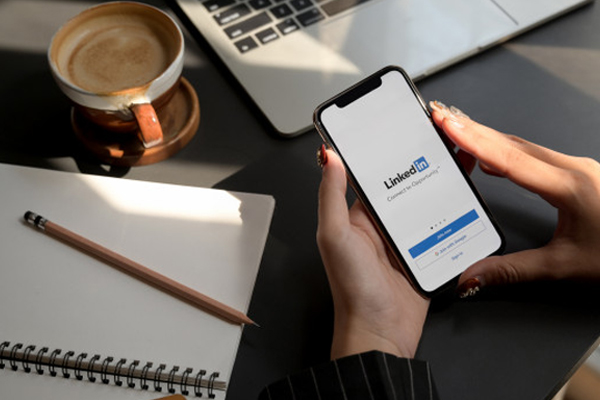
LinkedIn Lead Generation: When using LinkedIn, you need to send messages that build trust.
I want to thank everybody for stopping by to get some Yakov Smart, learn a little bit and get that seed planted about raising private money, finding high net worth individuals to get behind you and support you in your efforts, and to use LinkedIn to do that. One last time, go to 1000Houses.com/LinkedInLender and get a free webinar on how you can use all the networks in LinkedIn to fit into a system where you’re always generating leads for raising private money. It’s a great idea. I’d like to take my hat off to you for that. It’s a good idea.
Also, I would like to thank my sponsor, TaxFreeFuture.com. These are the people who offer Self–Directed IRAs, 401(k)s, health, educational plans, health and educational savings accounts, tax deferred or tax free, and there’s a lot of private money in those accounts. That’s one of the things you’ll probably need to learn to talk about or to find out if people have retirement plans that are sitting there doing nothing, or sitting in places they’re fearful of at the moment. Check out TaxFreeFuture.com and the 37 little video vignettes there because you will not believe what your financial advisers are not telling you. We’re going to tell you what they’re not telling you. We’re going to tell you why they’re not telling you. We’re going to tell you what you can do about it and it’s up to you. We’re out here. See you later, Yakov.
Important Links:
- 1000Houses.com/LinkedInLender
- 1000Houses.com/TFF
- 1000Houses.com/Livecomm
- 1000Houses.com/100
- 1000Houses.com/101
About Yakov Smart
 Yakov Smart is considered to be the leading expert when it comes to attracting high net-worth investors and raising capital using LinkedIn.
Yakov Smart is considered to be the leading expert when it comes to attracting high net-worth investors and raising capital using LinkedIn.
He’s the Author of Disrupting LinkedIn and a sought-after authority by top business owners and sales leaders worldwide.
Yakov has shared the stage with Samantha Debianci of Bravo’s hit TV show, Million Dollar Listing, and been a guest on numerous media outlets.
A resident of Scottsdale, Arizona, today Yakov is the proud leader of Linked Lead Enterprises, where his webinars, on-demand training programs and strategic consulting accelerators give people proven tools and techniques for transforming their LinkedIn Profiles into priceless, Capital Raising Assets.




